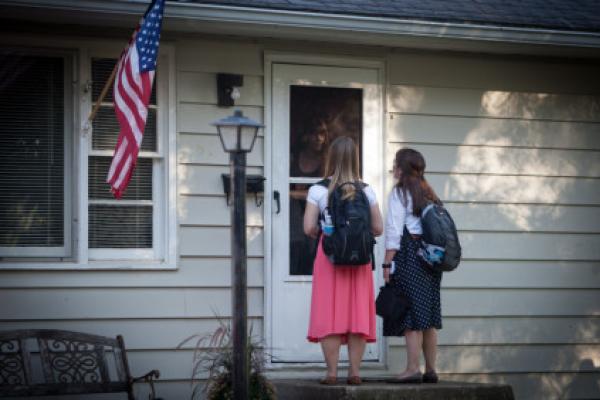In Northern California, the image of Mormon missionaries in dark suits and white shirts, knocking on doors at inconvenient times, is being replaced by the sight of these name-tag-wearing twosomes in blue jeans and T-shirts, hoeing gardens, scrubbing off graffiti, dishing out food in homeless shelters, and reading with refugees.
It’s part of the LDS Church’s recognition that its long-held practice of “tracting,” going door to door handing out church materials and delivering religious messages, is no longer effective. Now few people are home during the late morning and early afternoon, and those who are may not want to be disturbed.
“The world has changed,” LDS apostle L. Tom Perry said in June 2013. “The nature of missionary work must change if the Lord will accomplish his work.”
Read the Full Article

